|
BULB LOG 18 --- 2nd May 2007

Erythronium taylori
The wonderful recent introduction, Erythronium taylori is flowering again for us. Still only one bulb has flowered- I must feed it up and repot it this year -in fact I think it time to release half the bulbs into the garden as insurance. It is never a good idea to keep the only bulbs that you have in one pot it is too easy to lose them all; splitting them and growing them in different situations is wise. I must look to see if the seed that I got from this plant last year has germinated - the only problem with that is I do not know exactly where I put it except it is in one of the seed frames, I will just have to search.
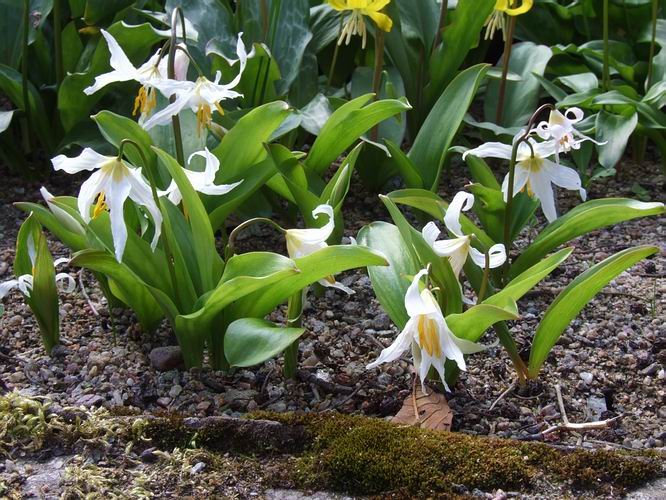
Erythronium montanum
Always the last erythronium to flower is Erythronium montanum. It is a real stunner, very distinct with plain green leaves and large pure white flowers with petals that twist, corkscrew-like, towards their tips.

Fritillaria acmopetala and pontica
The last two frits to flower in any year are Fritillaria acmopetala and F. pontica; both are variable in the flowers' size and the markings but both are also very distinct and not easily mistaken for other species.

Fritillaria acmopetala and pontica substipelata
The previous two frits are growing in the open garden while these two are growing loose in the spare area of sand plunge at the end of the frit house. The F. acmopetala was obvious but it took me a minute to realise what the other one was. It is a very handsome flower with nice leaves and it was only when I looked inside at the nectaries that I remembered that it was Fritillaria pontica var substipelata. I thought that I had lost it but obviously one of the small frit bulbs I popped into the sand plunge was a survivor, I must watch it and get seed from it to build up my stock again. You can never take bulbs for granted, not even the so-called 'easy to grow' ones. They have a great habit of bringing you back to earth with a thump, just when you think you have cracked how to grow them you suddenly lose the whole pot of them.
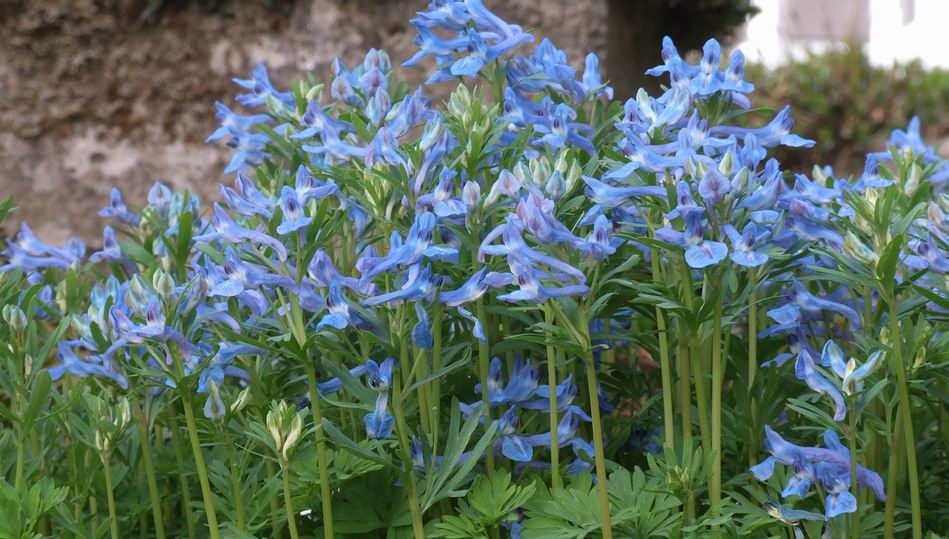
Corydalis cashmeriana
One plant that I never take for granted is the beautiful blue Corydalis cashmeriana - there are only a handful of plants that give us such a stunning colour.
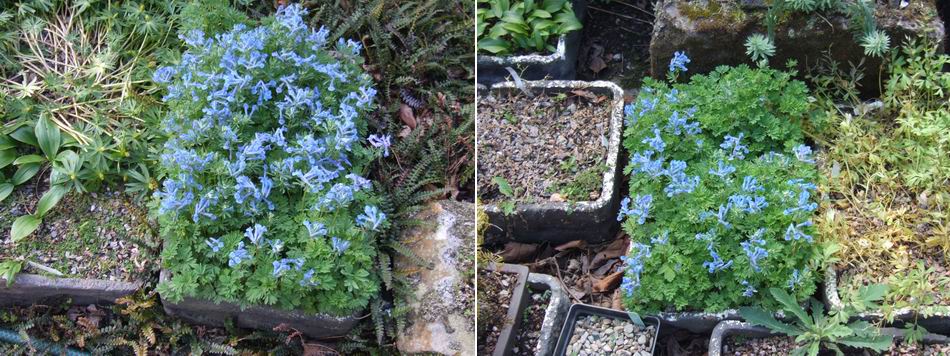
Two boxes of Corydalis cashmeriana
Last summer when the plant lost its leaves I split it up and replanted it into two boxes each with fresh compost with a generous helping of leafmould then it took its second flush of growth and produced another crop of leaves. Now both boxes are growing strongly and producing many flowers. I will need to split them again this summer as this is one of the secrets of keeping Corydalis cashmeriana happy, whether it is in the garden or a container, it loves to be split and placed into fresh humus rich compost every year.
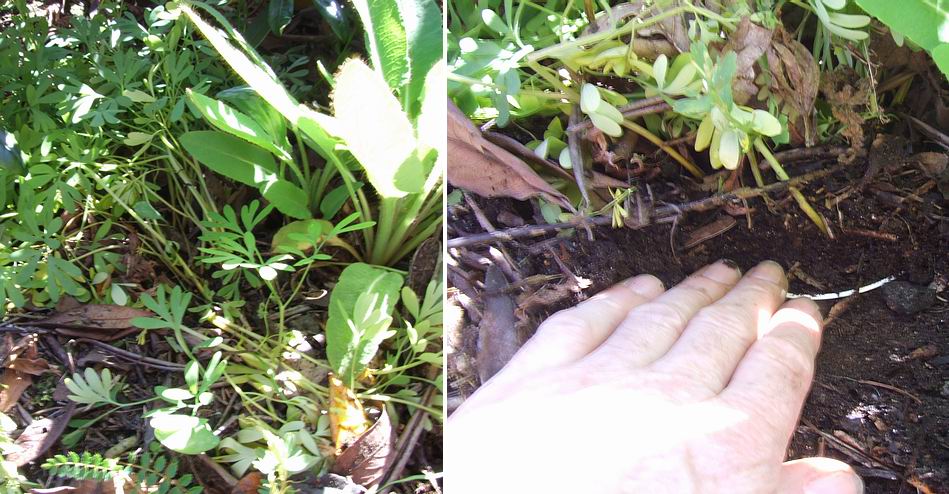
Corydalis solida leaves
Corydalis solida also grows best when it is split and replanted on an annual basis. I grow a lot of clones in plunge baskets all around the garden and just as the leaves start to yellow I scrape back the mulch to locate the basket.
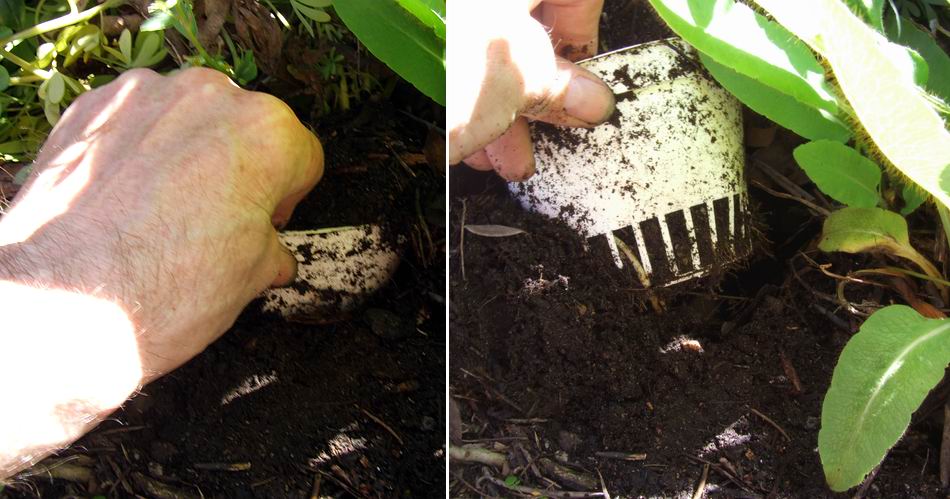
Pull up plunge basket
It is then an easy task to pull up the plunge basket without disturbing the surrounding plantings.
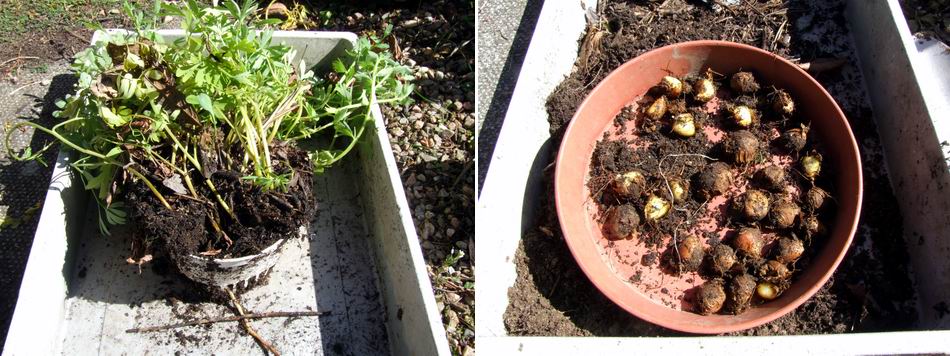
Separate tubers
Once lifted it is easy to tip out and separate the tubers. I normally place nine tubers in a basket and when I repot it I usually find at least double if not three times that number so I can make another two baskets full to plant somewhere else.
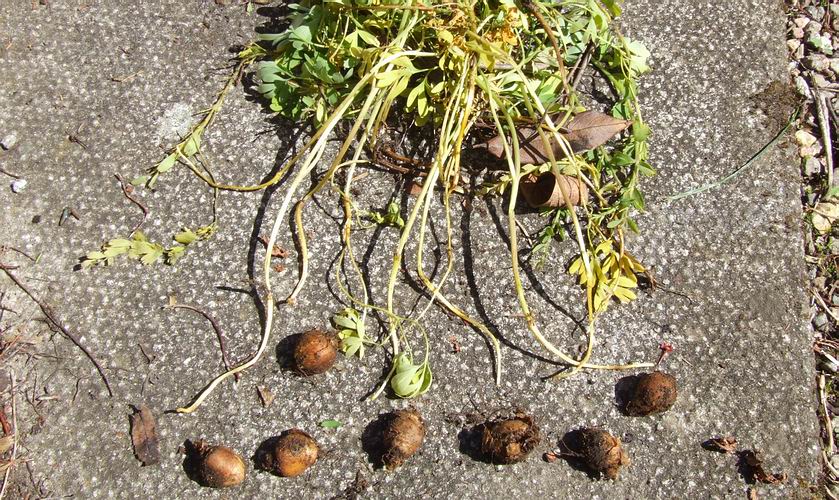
Corydalis solida tubers
An interesting fact about the corydalis is the way their leaves die down. It is quite different to most other bulbs where the leaves die back from the tips down to the base. With corydalis it is as if the tuber decides it is time to go into dormancy and it just cuts itself off from the leaves so they die from the base up - that is why they disappear so quickly.

Paris
A couple of Paris species that I moved last year are quite happy and showing no signs of having been set back by their move.

Dicentra cuccularia
I love the quiet charm of Dicentra cuccularia. The flowers are fascinating and the leaves have a delicacy and create a wonderful pale green lace carpet that other bulbs can easily grow up through. It also will disappear quite soon after the flowers fade so you can have other plants that will flower in the summer sharing the same bed.
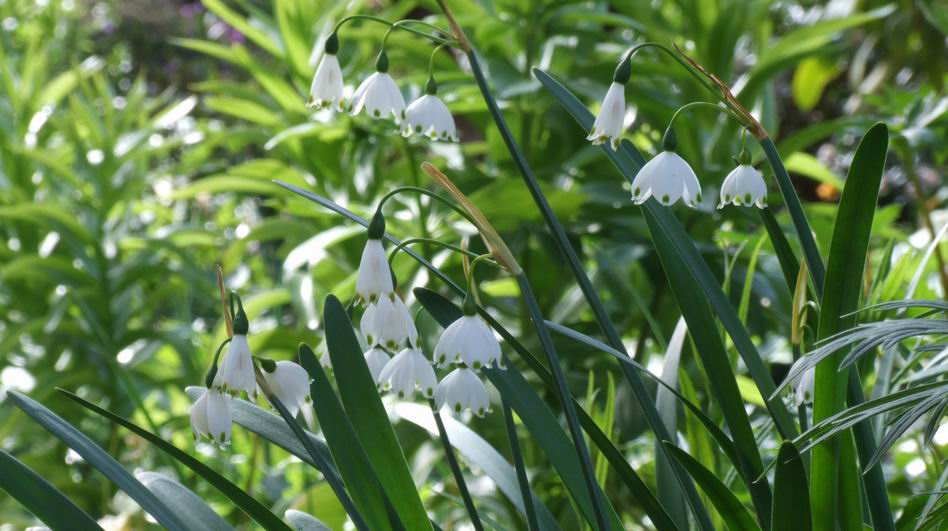
Leucojum aestivum
The last of the snowflakes to flower is rather tall with smaller flowers than its early spring relation but I love the effect that Leucojum aestivum gives with its dancing flowers usually three to a stem - no garden should be without it.

Nothoscordum ostenii
A quick check in the bulb house to see what is in flower and I find the yellow flowers of Nothoscordum ostenii gazing up at me like a nest full of gaping young birds wanting to be fed. One of the reasons for checking the bulb house was to look for any signs of aphids as it is often at this time that another wave appears, especially on the fritillaria leaves as the just start to go back. I have sprayed the frit house as there were just one or two aphids and as the bulbs are going back much earlier than normal this is the last chance to get a systemic insecticide into their systems.
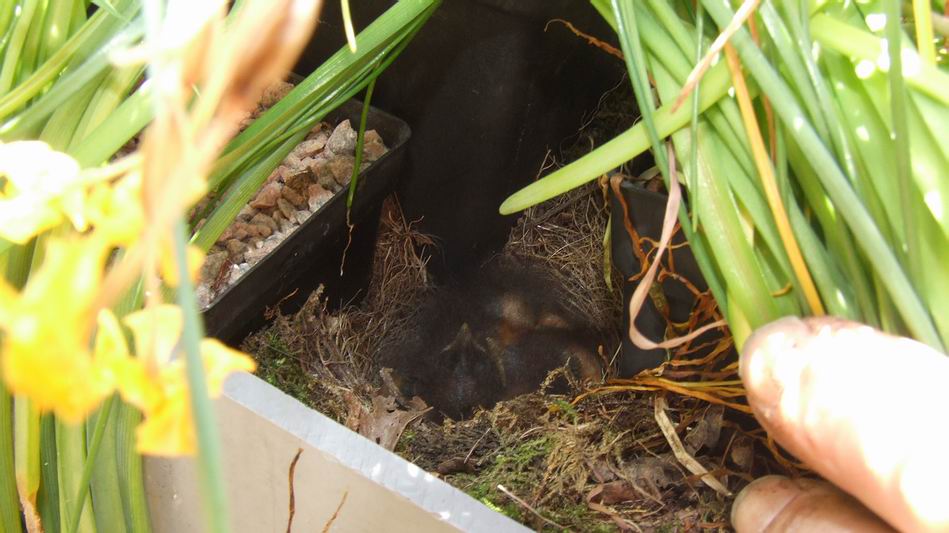
Robins nest with chicks
Luckily I did not see any aphids in the bulb house but I did disturb a robin as I moved the leaves of an Ipheion about, only to discover that, unknown to me, she had made a nest on the plunge.
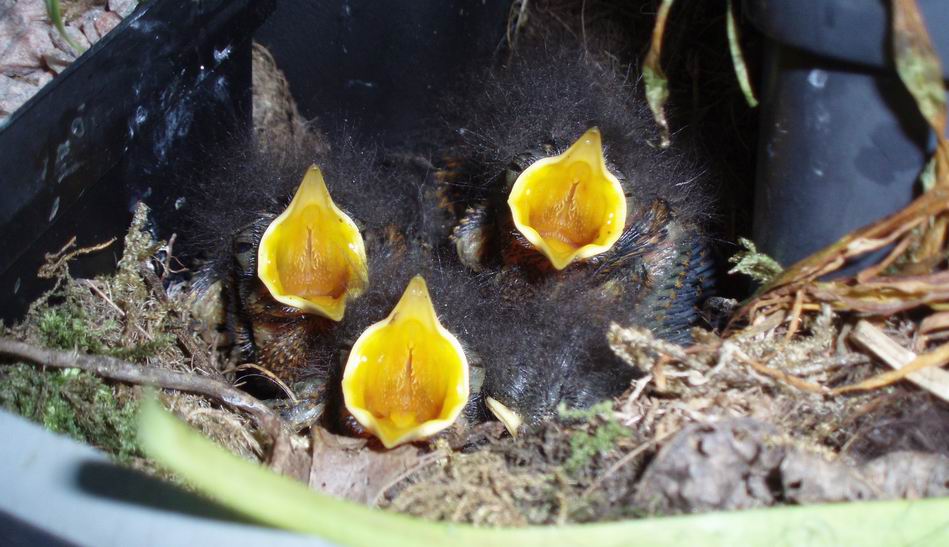
Robins nest
Lucky I had not sprayed with an insecticide as I might have harmed these five baby robin chicks. See what I mean about the flowers of Nothoscardum ostenii now?
^ back to the top ^
|

